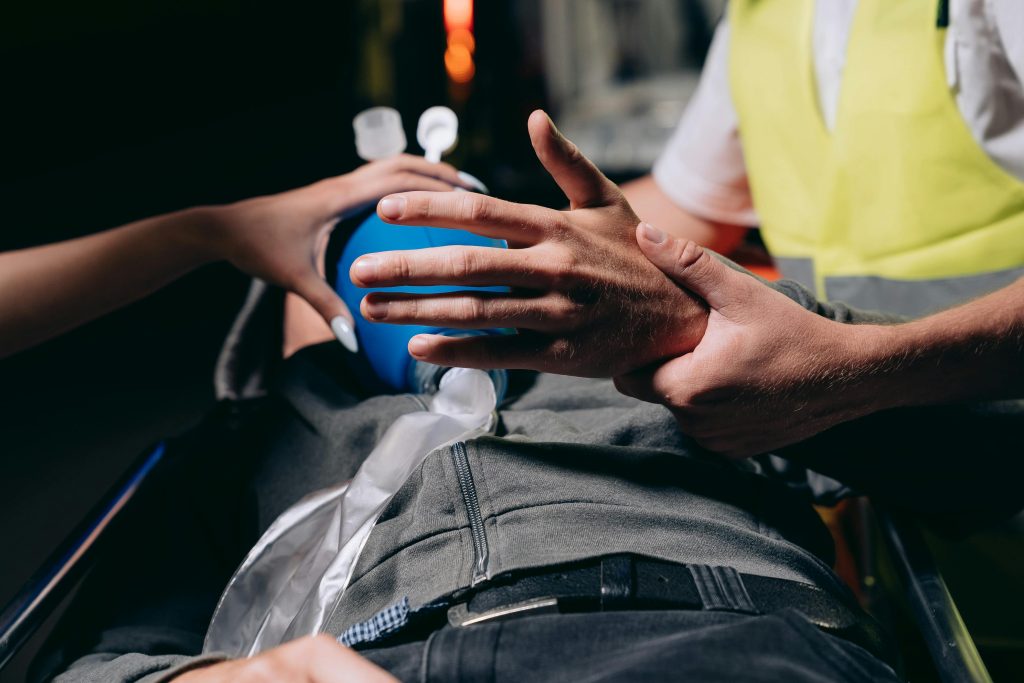CPR and Infection Control: What to Know When Assisting a Patient with an STD
When someone suddenly collapses and stops breathing, CPR (Cardiopulmonary Resuscitation) can save their life. But in the rush to help, many people pause and wonder—what if the person has a disease? Can I catch something by giving CPR? This fear is especially common when people think about sexually transmitted diseases (STDs)
CPR is safe, especially when done correctly and with basic infection control measures. This article will explain how to protect yourself while giving CPR, even if the person you’re helping may have an STD.
Whether you’re already CPR certified or just starting to learn, this guide will provide you with the knowledge and confidence to act quickly without hesitation.
Contents
Why Infection Control Matters in CPR
CPR involves close contact. If you’re performing mouth-to-mouth resuscitation, you’re potentially exposed to saliva, blood, or other body fluids. These fluids can carry viruses or bacteria, including those that cause STDs like:
- HIV (Human Immunodeficiency Virus)
- Herpes Simplex Virus (HSV)
- Syphilis
- Gonorrhea (rare in saliva, but possible)
- Hepatitis B and C (though not technically STDs, they are bloodborne)
While the risk of catching any of these from CPR is extremely low, it’s still important to understand how to protect yourself, especially in high-stress moments when hesitation can cost a life.
Is It Safe to Give CPR to Someone with an STD?
Yes. In most cases, CPR is completely safe, even if the patient has an STD. The chances of transmission are very low, especially if:
- There are no open wounds or sores in your mouth
- You use a CPR mask or barrier device.
- The STD is not present in saliva (which is true for many infections)
Let’s take a closer look at specific risks:
1. HIV
HIV is primarily spread through blood, sexual fluids, and breast milk, not saliva. There has never been a confirmed case of someone catching HIV from performing CPR.
2. Herpes
If a person has oral herpes (cold sores), there’s a small risk of transmission through direct mouth-to-mouth contact, especially if you have broken skin or cuts.
3. Hepatitis B/C
These viruses are found in blood. If you’re performing CPR and the person has blood in their mouth (from trauma or injury), the risk is slightly higher, but still low. Using gloves and a barrier mask helps greatly.
4. Other STDs
Diseases like chlamydia or gonorrhea are not spread through saliva and don’t pose a realistic risk during CPR.
Basic Infection Control Tips During CPR
If you’re trained or CPR certified, you already know that personal protection is part of the protocol. But for everyone else, here are some simple rules to follow:
1. Always Use a CPR Mask or Shield
Carry a CPR face shield or pocket mask in your bag, car, or first aid kit. These inexpensive tools create a barrier between your mouth and the victim’s, reducing the risk of fluid contact. Many even come with one-way valves that block fluids from coming back at you.
2. Use Gloves If Available
If the person is bleeding, use latex or nitrile gloves to avoid contact with blood. This is especially important if you have any cuts or broken skin on your hands.
3. Avoid Mouth-to-Mouth If You’re Not Comfortable
Modern CPR guidelines allow for “hands-only CPR” in adults. That means:
- Call 911
- Push hard and fast on the chest (about 100–120 compressions per minute)
- Skip breaths if you don’t have a mask or feel unsafe
This is still better than doing nothing, and it significantly lowers your risk of exposure to any infection.
4. Wash Up Afterward
After performing CPR, wash your hands thoroughly with soap and water. If you’ve come into contact with fluids, see a doctor as soon as possible for medical advice.
What If You’re a Healthcare Worker or CPR Responder?
If you’re a nurse, EMT, or first responder, you’re likely trained in universal precautions—a system where you treat every patient as if they could have an infectious disease.
This includes:
- Wearing gloves and masks
- Using CPR pocket masks with one-way valves
- Proper hand hygiene and disposal of contaminated items
- Reporting any exposure incidents immediately
This level of caution is not about fear—it’s about consistency. And it works. Infection rates from CPR among trained responders are nearly nonexistent.
Should CPR Courses Teach About STDs?
Absolutely. One of the biggest reasons people hesitate to give CPR is fear—fear of doing it wrong, and fear of catching a disease. But most of these fears are based on myths or lack of education.
Modern CPR certification courses should include a section on:
- How infections (including STDs) are transmitted
- What the real risks are during CPR
- How to use barrier devices properly
When people understand the facts, they’re more likely to help without hesitation.
When to Get an STD Test After CPR
In most cases, you don’t need an STD test just because you performed CPR. But if:
- You had direct contact with blood
- You have open cuts that were exposed.
- The person was bleeding from the mouth, and you’re concerned.
- You have reason to believe they had a known communicable disease.
Then it’s a good idea to visit a health clinic and discuss the situation. A doctor might recommend a standard STD test and possibly other screenings depending on your exposure. Clinics offer quick and confidential testing, and in most cases, it’s a precautionary measure.
Final Thoughts: Don’t Let Fear Stop You
It’s normal to feel nervous about the risk of infection during CPR. But the risk of doing nothing is much greater. A person in cardiac arrest has only minutes to live without CPR. Your willingness to act—safely and quickly—could make all the difference.





Thank you for bringing this topic to light. We do not talk about this enough and most people need to know how to protect themselves even when trying to help save someone else’s life.
I actually have heard of the CPR shield. I haven’t seen one on real life though. It’s a really solid invention.
This was super helpful. It’s one of those topics that doesn’t get talked about enough, but it really matters. Glad I read this — now I feel a little more prepared if I’m ever in that kind of situation.
I never thought about CPR and STDs together before, but now it makes sense why some people hesitate!
This was super interesting. I have actually always wondered about giving CPR to someone with an STD or a disease. I’m surprised transmission risk is usually so low!
Good to know! I’ve never performed CPR myself, so raising awareness like this really helps challenge misconceptions. It also empowers individuals to take action against STDs.